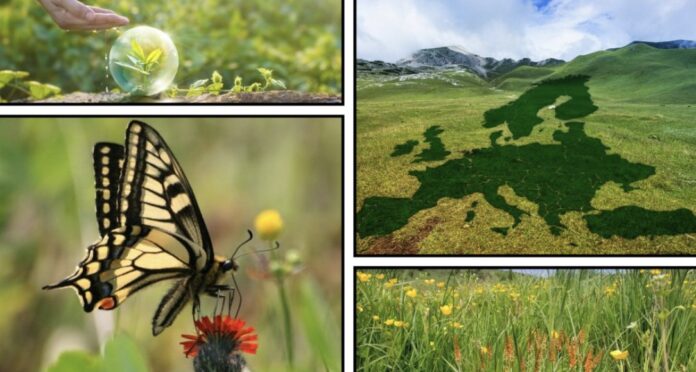У вівторок, 27 лютого, Європейський парламент ухвалив новий закон щодо охорони природи, спрямований на відновлення 20% суші та морських територій ЄС до 2030 року та всіх деградованих екосистем до 2050 року.
Більшість депутатів Європарламенту підтримали законопроект, не дивлячись на протести фермерів проти “зеленого курсу”. Наступним кроком буде голосування в Раді ЄС.
Цей закон має на меті відновлення деградованих екосистем у всіх країнах-членах, сприяючи досягненню цілей ЄС з клімату, біорізноманіття та підвищуючи продовольчу безпеку.
Країни-члени зобов’язані відновити принаймні 30% різноманітних територій, таких як ліси, луки, болота, річки, озера та коралові рифи, до 2030 року, підвищуючи цей показник до 60% до 2040 року та до 90% до 2050 року. Для покращення біорізноманіття у сільськогосподарських екосистемах країн ЄС необхідно досягти прогресу за двома з трьох наступних індикаторів: індекс лугових метеликів, частка сільськогосподарських угідь з високим різноманіттям ландшафтних особливостей та запаси органічного вуглецю в ґрунтах.
Також важливою є ініціатива фермерів щодо збільшення кількості птахів на сільгоспугіддях, оскільки вони є важливими індикаторами загального стану біорізноманіття.
Для досягнення відновлення природи в ЄС також необхідно активно висаджувати дерева, осушати болота та відновлювати річки до їхнього природного стану.
“Оскільки відновлення осушених торфовищ є одним з найбільш ефективних заходів зменшення викидів у сільському господарстві, країни ЄС мають відновити принаймні 30% таких торфовищ до 2030 року, 40% — до 2040 року та 50% — до 2050 року”, — зазначив депутат Європарламенту Сесар Луена.
Згідно з пропозицією Європарламенту, закон дозволяє призупинити досягнення зазначених цілей у разі, якщо вони значно підвищать кількість земель, придатних для вирощування сільськогосподарської продукції.


